It has been two years since I last touched the subject of the state of Venezuela’s internet, while there’s been significant changes in the broad panorama (including a wider spectrum of alternatives), stagnation is what continues to dictate the pace for the majority of the country, specifically to those that have no choice but to depend on the Venezuelan regime’s CANTV, including yours truly.
Depending on where you live, how big your foreign currency budget is, and how lucky you are, you may be among the few ones that get to stand better than ever before when it comes to internet connectivity down here, even being able to hire services that may give you something that’s quite comparable to other countries.
On the other hand, your internet situation may be substantially far worse these days, with many having completely lost internet access due to the precarious state of the networks, stolen cables, damaged devices, and the ever so present collapse of the country made manifest in the extremely bad economic situation that many families have fallen into.
While new alternatives and private internet options with relatively decent speeds exist (at a cost), these still don’t have a broad service coverage, and many are only limited to certain cities within Venezuela or even specific areas within said cities. The truth of the matter is that we’re still severely behind the world’s curve when it comes to speed—one of the worst in the world.
According to Speedtest’s current global index, Venezuela ranks 169 out of 175 when it comes to fixed broadband, and 138 out of 140 in mobile internet. Truth be told, this ranking only measures average download and upload speeds, I doubt that we’re actually worse in terms of stability and latency than say, Syria.
As there are still no viable private internet service provider alternatives for me, I still find myself relying and depending on our old CANTV ADSL line that we’ve had since 2002 for all things internet, running with the same 4Mbps download /0.75Mbps upload that I’ve had ever since it got upgraded in October of 2013.
Even though it’s been seven years (almost to the date) since the last speed upgrade, this line is still faster than 89% of the rest of the country, while being behind the country’s average, according to Speedtest. It’s not suited for streaming or anything like the sorts, but beggars can’t be choosers.
Truth be told, we’re a failed state in all but name, and there are bigger priorities down here than a more ‘acceptable’ bandwidth, such as health, food, power, education, freedom, you know the drill…
Wake me up inside, CANTV wake up
CANTV, the state-run telecommunications company that was once privatized, then re-nationalized under the banners of Bolivarian Socialism continues to be the necessary evil, and a nightmarish constant source of headaches for many.
As with many public (and private) utilities, CANTV’s fees were kept absurdly low over the past years. Their fees have been dramatically increased over the past year but they still are quite relatively low, as of September of 2020, I pay less than $1 for this ADSL service, however, you do get what you’re paying for…
After years of having a ceiling of 10Mbps as their highest (and hardest to obtain) plan, they started to offer plans that go all the way up to 22Mbps, which is closer to ADSL2+’s maximum throughput of 24Mb/s. This newfound ‘improvement’ could be attributed to the fact that certain Chinese companies are investing and exerting control on the erstwhile Venezuelan flagship telecom company.
These new plans may be relatively cheap, but are out of reach for many, they’re certainly a much needed quality of life improvement, but its an offering that is severely limited in reach and scope due to the derelict and obsolete state of most of their network infrastructure.
I spent a whole month dealing with CANTV’s WhatsApp customer service in an ultimately futile attempt to jump to a faster internet plan, after a few days of silence their official response was that this area can only have up to 3Mbps—even though I’ve had 4Mbps since 2013.
The experience and quality of the service continues to be up to fate to decide, either it works or it doesn’t. Approximately thirty percent of Caracas’ CANTV telephone and internet lines are currently down due to the ongoing failure of their infrastructure, and that’s just in Caracas, the capital that’s shielded from the sheer bluntness of the collapse of the country, so you can imagine how bad it is on the rest of the country. In this, COVID-19 world of working at home and e-learning, engaging in those activities can be quite daunting.
It was only a matter of time before things would break down in this area. During the start of September a storm gave the coup the grace to the already worn and damaged ADSL cabling in this street, giving forth to a constant disconnects in the service.
CANTV’s workers informed us that the cable was indeed pretty old and worn, that they had been just jury rigging it over the past years but it had reached its limit. They also informed us that a replacement cable was hard to find, and that there was no ETA.
It took two weeks for people to realize that this may not ever be fixed and that this street could potentially go for months—even years—without CANTV’s internet service, given the sheer amount of posts one can find on social media of communities that have been waiting years to no avail.
Lo and behold, this community got out of its lethargy and rallied, funny that the imminent threat of a protest made the ‘hard to find’ cable and spare parts materialize out of thin air, and after two weeks we got internet connectivity back. The telephone line is still not working on our house, and it hasn’t for over a year now, but so long as the internet works I can live without it.
I gotta confess there’s a sense of guilt over the fact that this matter was resolved in a ‘timely’ manner while there’s people who have gone months or even years without a response from CANTV, call it a bizarre survivor’s guilt even, as I know people who’ve had to move in order to get internet to keep their jobs.
Fibre Optic is something that CANTV is finally getting into, currently though a limited GPON test run being deployed in Guatire, with a broader deployment is slated for 2021. While it may sound like a potentially good alternative for me and my good ol’ 4Mbps line, I’m not gonna sit here and wait for it, as my priority is, and continues to be, getting the hell outta here.
The Private side of things
Over the past two years there’s been a noticeable upsurge in private ISP offerings for residential customers, the easing on foreign currency regulations that first got us into this mess have now enticed a few private companies to give things a shot. September’s internet problems prompted me to embark on a quest to seek out what viable alternatives exist for me, and to see if I could afford one of them.
While they look great at a first glance and some do offer pretty decent speeds and plans that do compare to ones offered in our neighboring countries, they come at a price, and not all of them are as glamorous in practice as they are in paper.
You still have the more established ones, such as Inter, Netuno, and Supercable, all of which offer internet through different technologies, such as fiber, satellite, or even wireless fiber, and their setup fee can go all the way to $200 or higher. However, just because they’re ‘private’ doesn’t mean they’re perfect, and if I go by anecdotal evidence from friends, acquaintances, and even family that use those above-mentioned providers, then they’re not worth it, unless you don’t mind sudden slowdowns in speed, high latency, and disruptions in the service.
Residential wireless fibre seems to be the rave these days, as it’s easier to deploy than a landline. Some of the private companies that work outside of Caracas have quite the good offerings that are not found in the capital with relatively acceptable fees, offering wireless fiber that averages 50Mbps—speeds, which I may add, would be utopic for me, as I’m days away from starting my eight year of living with a 4Mbps download / 0.75Mbps upload ADSL line. Other providers are even faster, offering 25, 50, 100 at acceptable rates—even going all the way to 500Mbps, but that particular one only operates in Zulia, a state plagued with constant blackouts, talk about monkey paw wishes.
We continue to suffer through hyperinflation, to the point that it’s begun to devour foreign currency too, as such, many of these providers don’t openly show their setup fees and rates, a practice that goes way back to the days of the socialist regime’s fiercer currency controls. In order to get a quotation you need to either send them an e-mail, contact them through social media, or go through their websites.
Of all the ones I reached out to, only one said they were 100% certain that they could provide me with their service. It was all fun and games until I got their email detailing their fees.
$750 setup fee for a wireless fibre point, which they could reduce to $450 if I bring 11 more customers from this building with me (who would have to pay $450 per household). $1200 for a year of 20Mbps (or $120 per month) and $800 (or $80 per month) for 10Mbps, what a steal…
I immediately nope’d the hell out of it. There are certainly other providers with good service that are far cheaper, but still way out of my financial reach (and that of the majority of the country for that matter), regardless, many of those outright said to me that they currently don’t have coverage to this area.
Satelite is another option, not one that it’s ideal for me, given its high latency nature, but it’s the only alternative for those in the furthest corners of the country, it’s also one that you can hire and pay from Colombia if you want a fancier service.
Just like with the case of wireless fibre, the rates can go from okay to ludicrous, take for instance this particular provider:
All that and they only guarantee a minimum of 70% of the hired speed. If you want a dedicated line with 100% guarantee of the hired speed then…
As I’ve mentioned before, you can brute force your way out of this collapsed country’s shortcomings if you have the greenbacks to do so, and internet service is no exception. If you do have the means to afford a private internet service (the few ones that are actually worth it) then you can raise your own internet bubble for your Netflix, your streaming, and all that fun stuff.
But, as a friend so eloquently said to me when we discussed the subject last month: “If you have enough money to pay for that kinda stuff you’re better off just fleeing from the country,” and boy, he is right.
Mobile internet
Man, where do I begin with this one…
I’ve never made extensive use of mobile data beyond the 400MB per month that my grandfathered cell phone plan gives me. During the last two weeks of ADSL outage I relied on it to stay connected and to try to get some work done, I can’t say it was a pleasant experience though.
The price per GB is still kindoff cheap, as of the time of writing this post, it sits at a bit less than $0.50 per GB, affordable perhaps, but the bill does rack up pretty quickly if you use a lot of it during a month. Their rates, much like other private services like cable tv, were forcefully kept low for the longest time, and while they’ve been allowed to raise them a little here and there, they remain relatively low still, which is one of the reasons they didn’t got to invest much in strengthening their coverage network over the past years.
Movistar, the carrier that I’ve used for the longest time, is a mess, there’s no other way to describe it unless I want to use swear words. During the previous month it barely worked at acceptable levels outside of a few hours and even minutes per day. 4g signal was something I only got to barely use during late night hours, because it’d be too congested during the rest of the day. For what it’s worth, I’ve been told that Digitel, their only real competitor, is better in this regard.
One way I’d get some decent signal was by placing the phone in hotspot mode next to a window in our laundry room, where the signal is somewhat better.
At the lack of better alternatives, or because their CANTV lines are now non-operational, a growing number of people are using mobile sim cards hooked to ‘WiPods’ to share the connection with their house’s devices.
In any case, given my recent personal experience with mobile data, there’s no way that I can recommend it as a permanent internet solution, it’s too unstable to be reliably used for education, teaching, and certainly not fit as a primary source of internet.
Regrettably, some people have to ride this way, it is what it is, after all, this is Venezuela.
The continued censorhip
As if having unreliable and slow internet connectivity wasn’t bad enough, we still have to deal with the regime’s selective censorship, which they employ to hinder, silence, and slow the spread of dissent and opposing views.
The main recipient of the blocks continue to be news websites, specially those from neighboring countries, as well as some currency exchange websites. Most of these blocks can be easily circumvented through switching DNS servers to Google’s, Cloudflare, or any similar one, while others do require the use of a VPN or similar workaround.
In a weird move, Spotify was blocked by CANTV sometime during the first months of 2019 for over a year, along with a list of adult websites and other services. These bans were surprisingly lifted a few months ago. For reasons that escape my knowledge, Reddit remains blocked through Movistar’s mobile internet (inb4 nothing of value was lost cause >Reddit).
Since the regime likes to keep a facade that they’re democratic and that Venezuela has ‘absolute’ freedom of speech, social media and some services such as Google and YouTube have been the target of selective blocks that begin and end right when an opposition figurehead or foreign politician is doing a live streaming broadcast and whatnot.
Confirmed: YouTube, Periscope, Bing and Google services restricted in #Venezuela from 11:10PM UTC (7:10PM VET) coinciding with US Secretary of State Pompeo press conference with Colombia President Duque streamed from #Cúcuta; incident ongoing #KeepItOn ⬇️https://t.co/EZSZFEQLrj pic.twitter.com/xqdYoap7nR
— NetBlocks.org (@netblocks) April 15, 2019
The regime, through it’s Telecommunications Committee can force any internet provider to block a website whenever they feel like, and these companies must comply with the regime’s whims and desires if they wish to keep their operating licenses.
—
Sure, there has been some progress when it comes to internet services, but they’re all offset by too many setbacks that keep the country stagnated while the rest of the world moves forward with internet connectivity. As much as I’d love to have a faster pipeline to expand my content and even do some streaming here and there, that’s not an option that I have available right now—in any case my priority is the same as before: escape from here with my brother, good internet comes later.
All I can do is hope that this ADSL line holds steady until I can finally migrate outta here…
Until the next one.
-Kal
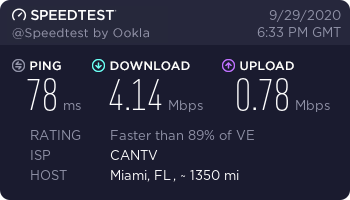
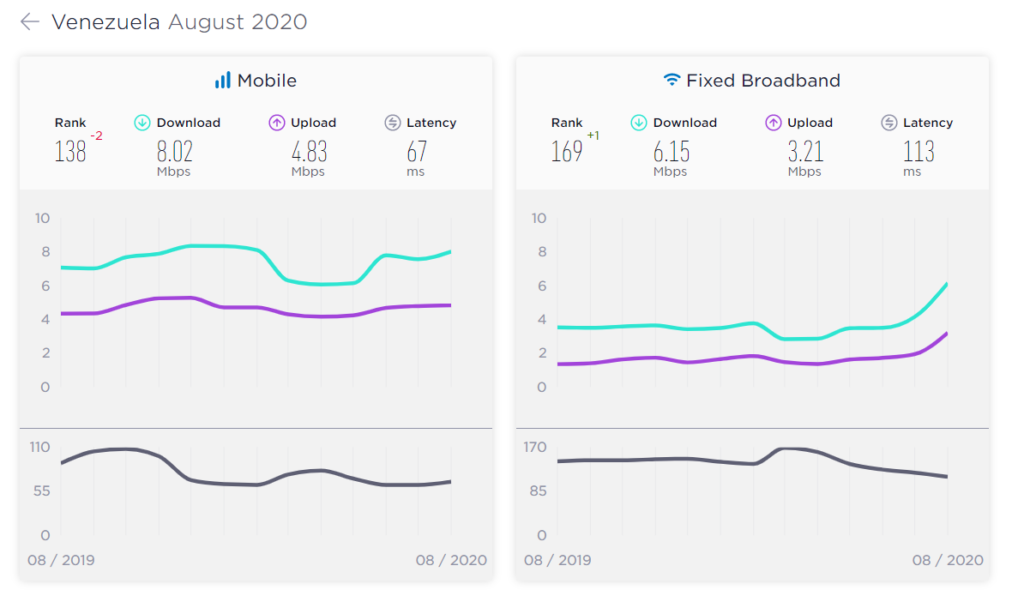
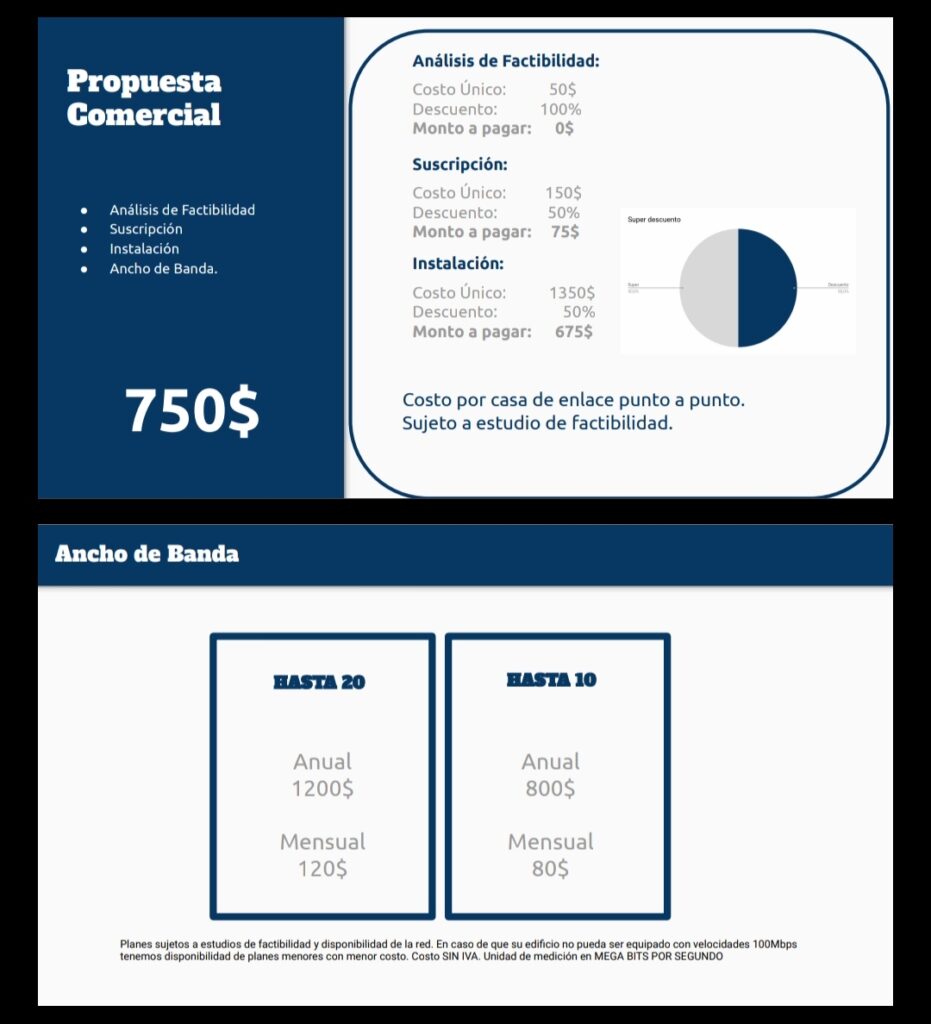
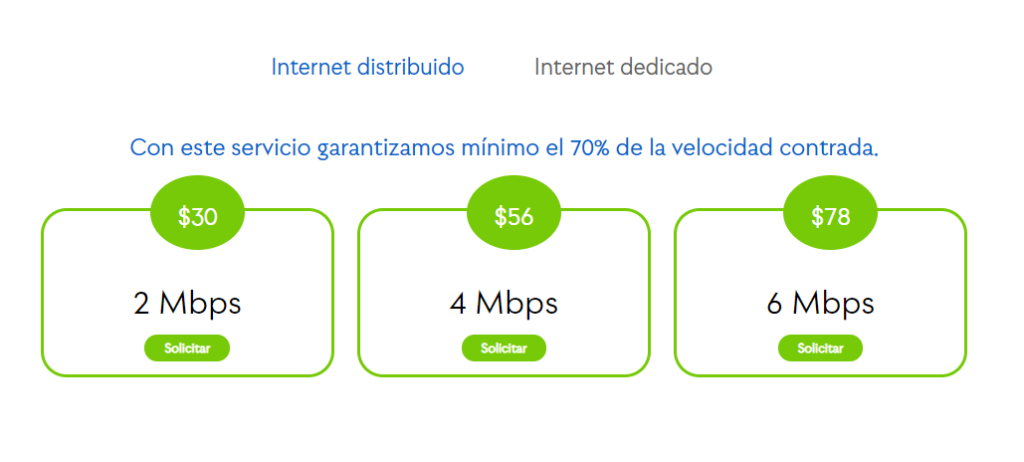
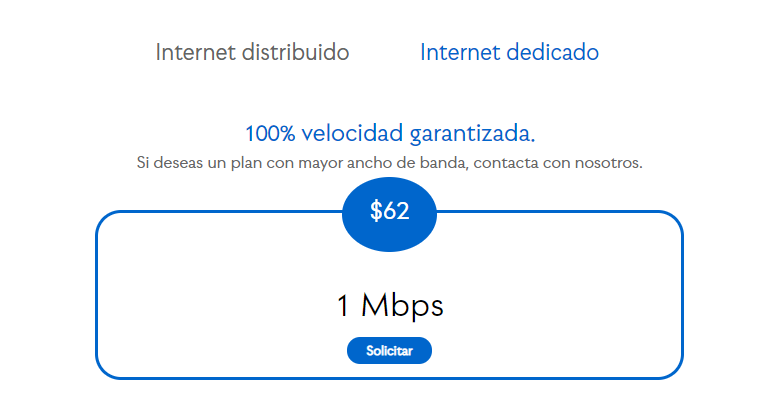
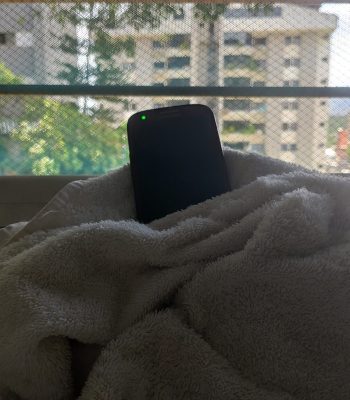
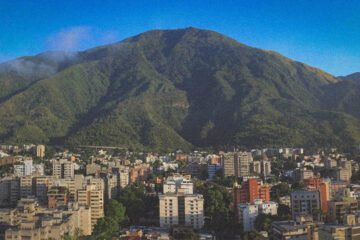


1 Comment
The (absolute) state of Venezuelan internet: 2021 edition. Part I | ckaleb[dot]com · September 9, 2021 at 6:11 pm
[…] of 2021, Venezuela now ranks 133rd out of 180 on Speedtest’s fixed broadband (up from 169/175 last year). The average broadband speeds dramatically jumped from 6.15Mbps download / 3.21Mbps upload to […]
Comments are closed.